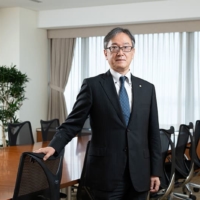With veined and creased hands, frail yet steady, Tetsuzo Shiraishi leans across the table to offer a copy of an illustration he created specifically for this interview. It depicts a towering tree, its branches adorned with handwritten notes recounting personal and societal events from his 87-year life.
Episodes from his youth are inscribed near the base of the trunk, while higher up, where the tree narrows with age, more recent developments appear, reaching ever closer to the sky.
“You see, the tree emerges from the ground in August 1945, by which time I was 7 years and 10 months old,” he says on a scorching Saturday in July, seated in an air-conditioned room cluttered with stacks of books and paper at The Center of the Tokyo Raids and War Damage in the capital’s Koto Ward. “That’s when the war ended.”





















With your current subscription plan you can comment on stories. However, before writing your first comment, please create a display name in the Profile section of your subscriber account page.